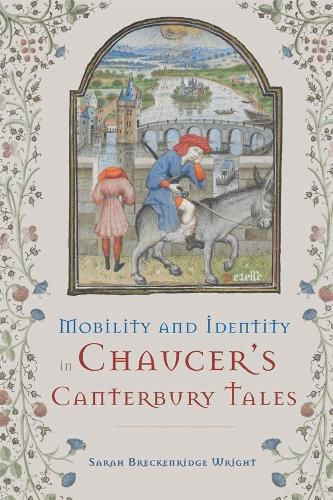Readings Newsletter
Become a Readings Member to make your shopping experience even easier.
Sign in or sign up for free!
You’re not far away from qualifying for FREE standard shipping within Australia
You’ve qualified for FREE standard shipping within Australia
The cart is loading…






The Canterbury Tales is a collection of stories told by pilgrims en route to Canterbury; but how does their movement shape the world around them, and how are they shaped by their world? This volume seeks to answer these questions by exploring expressions of mobility in Chaucer’s frame narrative and tales. Combining the theoretical and historical methods of literary analysis with the interpretive tools of cultural geography and ecocriticism, it argues that movement is the medium through which identity is performed in The Canterbury Tales. This unique interdisciplinary approach shows how physical and ideological mobilities shape and are shaped by geographical, ecological, sociopolitical, and gendered identities. As human and more-than-human bodies cross borders and dissolve boundaries, they contribute to a fluid, permeable, and hybrid world that challenges traditional perceptions of boundedness, security, and fixity. By examining this kinesis alongside contexts including medieval bridge building, economics, and biology, this book reveals a rich exchange between word and world. In the end, The Canterbury Tales emerges as an amalgam of lived experience and the poetic imagination that both chronicles and constructs a world in the process of becoming.
$9.00 standard shipping within Australia
FREE standard shipping within Australia for orders over $100.00
Express & International shipping calculated at checkout
The Canterbury Tales is a collection of stories told by pilgrims en route to Canterbury; but how does their movement shape the world around them, and how are they shaped by their world? This volume seeks to answer these questions by exploring expressions of mobility in Chaucer’s frame narrative and tales. Combining the theoretical and historical methods of literary analysis with the interpretive tools of cultural geography and ecocriticism, it argues that movement is the medium through which identity is performed in The Canterbury Tales. This unique interdisciplinary approach shows how physical and ideological mobilities shape and are shaped by geographical, ecological, sociopolitical, and gendered identities. As human and more-than-human bodies cross borders and dissolve boundaries, they contribute to a fluid, permeable, and hybrid world that challenges traditional perceptions of boundedness, security, and fixity. By examining this kinesis alongside contexts including medieval bridge building, economics, and biology, this book reveals a rich exchange between word and world. In the end, The Canterbury Tales emerges as an amalgam of lived experience and the poetic imagination that both chronicles and constructs a world in the process of becoming.